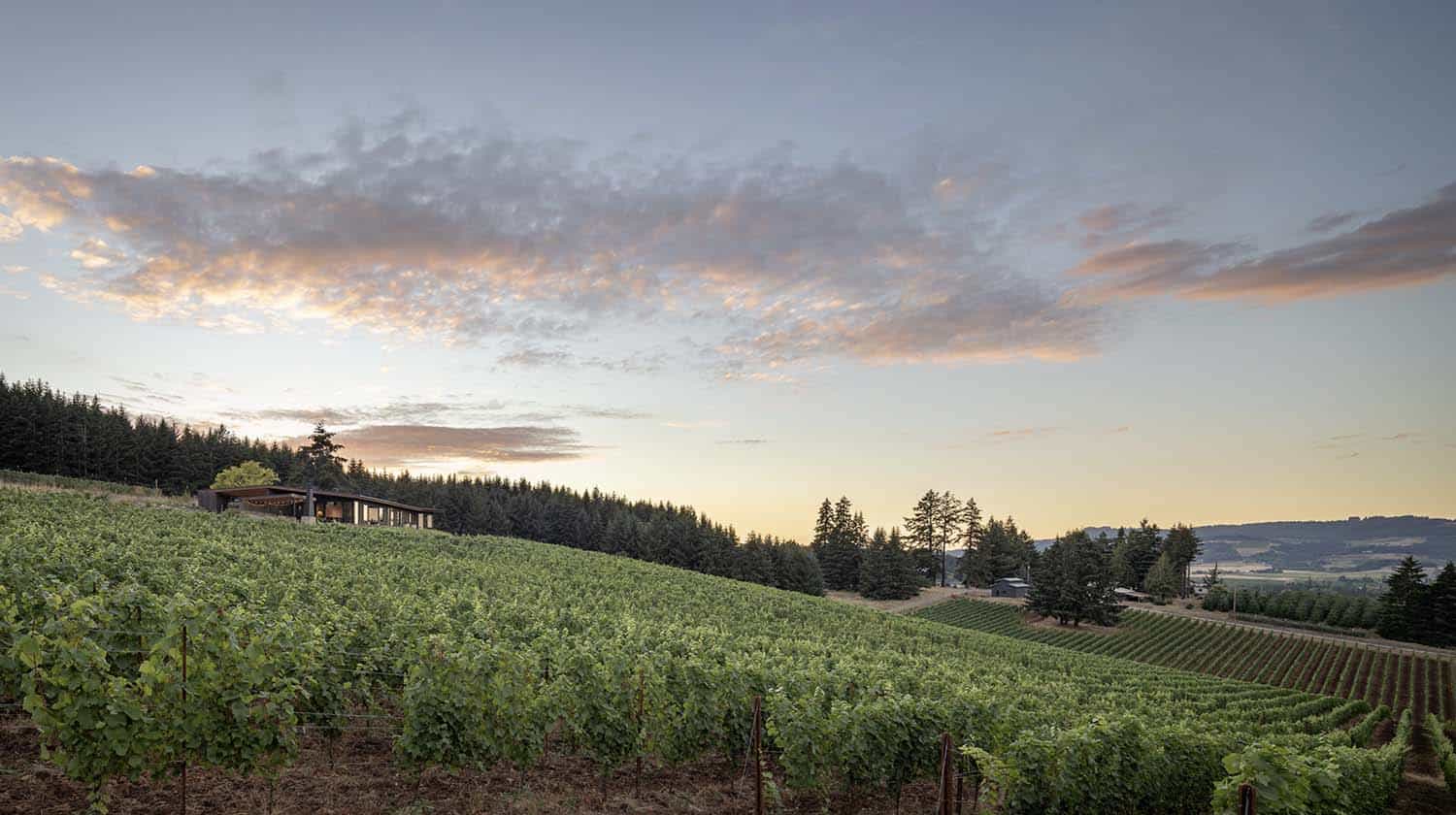
Prentiss Balance Wickline Architects have designed this modern vineyard home that is located in The Willamette Valley, Oregon’s oldest wine region. The dwelling is nestled in the hills of this beautiful wine-growing region. Formed from the topography and agricultural plan of the site, this small home was thoughtfully devised to soak in the surrounding terrain while also becoming a part of it.
Indoor-outdoor elements visually extend the interior living spaces, while the roof shape mimics the incline of the site. The home is comfortably nestled into a newly planted vineyard, oriented to harmonize with the rows of vines. It was only by chance that the owners purchased the land; coming across it while visiting family in the area and saw its potential as a vineyard – something they had always dreamed of.
The simple parti of the dwelling is derived from both the slope of the property and the linear overlay of the vines. These two patterns — the topography and the vine rows — are set at 45 degrees to each other, with the grapevines planted on a four-foot interval running north to south, which is the optimal sun orientation for growing.
The main axis of the house is aligned along the contours of the site and on the bias of the vineyard pattern, allowing for varied views of the cascading vineyard below. Connection to the vineyard is emphasized with angled adjustments to the plan. At the edge of the steepest slope, the main bedroom is turned to look down through the rows of vines.
The foot of a custom bed frame sits flush against the wall, with a large operable window that gives the sensation of sleeping outdoors. The vineyard pattern is also the basis for two notches in the floor plan. One forms the main entry vestibule, along which a three-sided wood-burning fireplace becomes the centerpiece of the living area.
The other notch is an inward cut that subtly separates the living area from the kitchen/dining and creates additional bench seating on both the interior and exterior.
To mitigate heat from the intense summer sun, clerestory windows on the southern façade and translucent panels above the outdoor pavilion filter light while still keeping the space bright. Board and batten cedar siding takes a note from the agrarian region and forms a screen around the home, tempering sunlight in the interior workroom.
This siding also gives privacy to the shower in the main bathroom, which opens completely to the outdoors. Additional shading is brought to the site by the planted trees, especially the large oak tree in the center of the circular driveway.
Materials were thoughtfully selected to blend in and echo the surrounding landscape on both the exterior and interior. Concrete floors are tinted with color to match the Jory soil of the area; cedar beams, milestone plaster walls, and dark soapstone countertops reflect the colors of the site.
Multiple patios step down along the slope of the land, guided by wood screens and colored concrete retaining walls.
The outdoor pavilion features a large outdoor fireplace, making it the perfect gathering place for dining amongst the vines. Like the rows of individual grapevines joining together, the home’s multi-layered spaces are at once independent from each other and yet fully integrated.
What We Love: This modern vineyard home showcases wondrous views of rolling hills as far as the eye can see. Material selections help to make this home meld with its surroundings while being low-maintenance and highly durable. There are plenty of indoor/outdoor spaces to enjoy the company of family and friends and the beauty of nature. We are especially loving the main bedroom with its large picture window perfectly framing an idyllic view of Oregon’s wine country.
Tell Us: What are your favorite design features in this modern vineyard home? Please share your thoughts in the Comments below!
Note: Have a look at a couple of other fascinating home tours that we have highlighted here on One Kindesign in the state of Oregon: A modern rustic farmhouse with glorious views of Oregon’s high desert and A beautiful Oregon home offers breathtaking views over Hood River Valley.
PHOTOGRAPHER Andrew Pogue

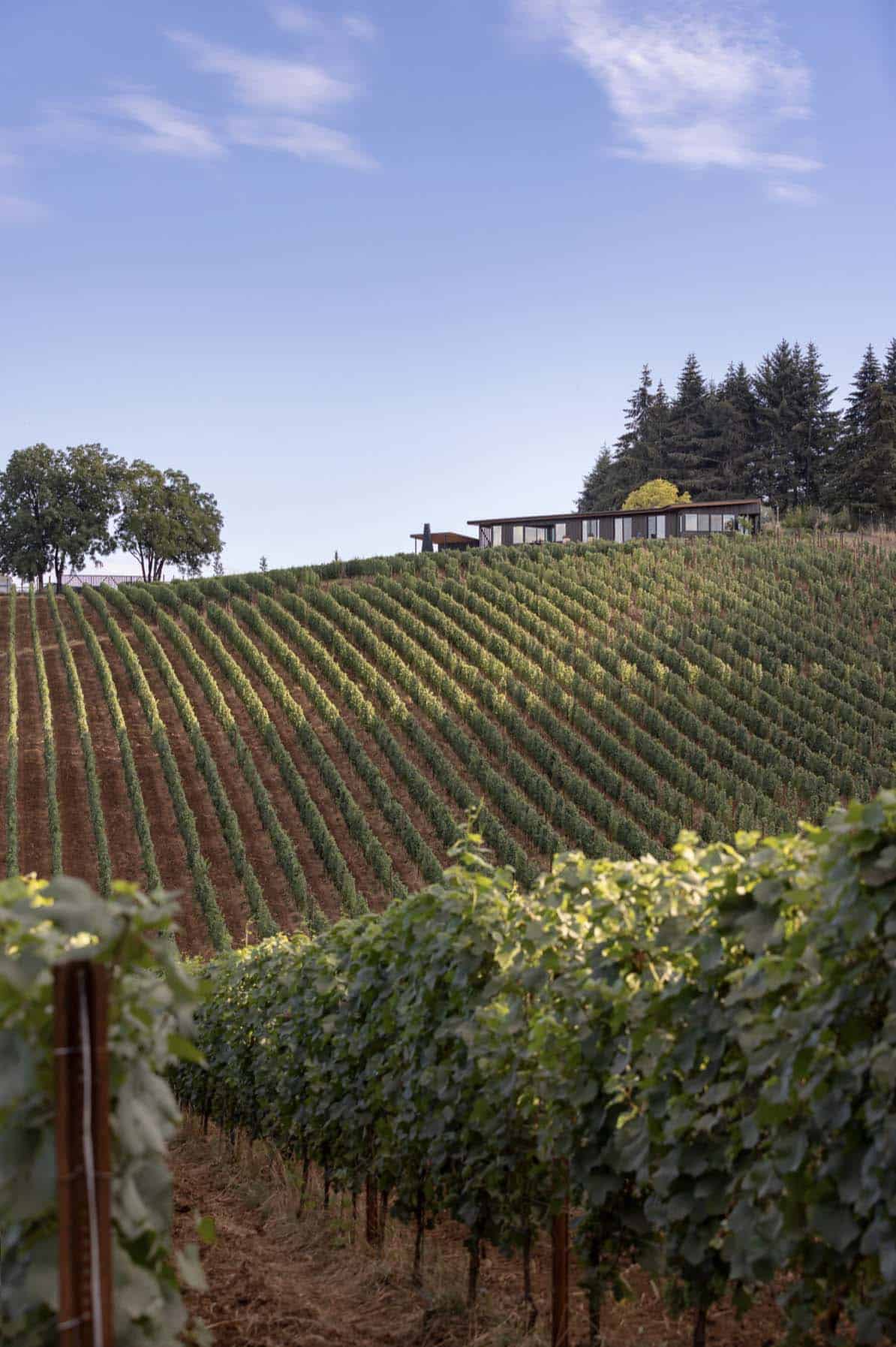
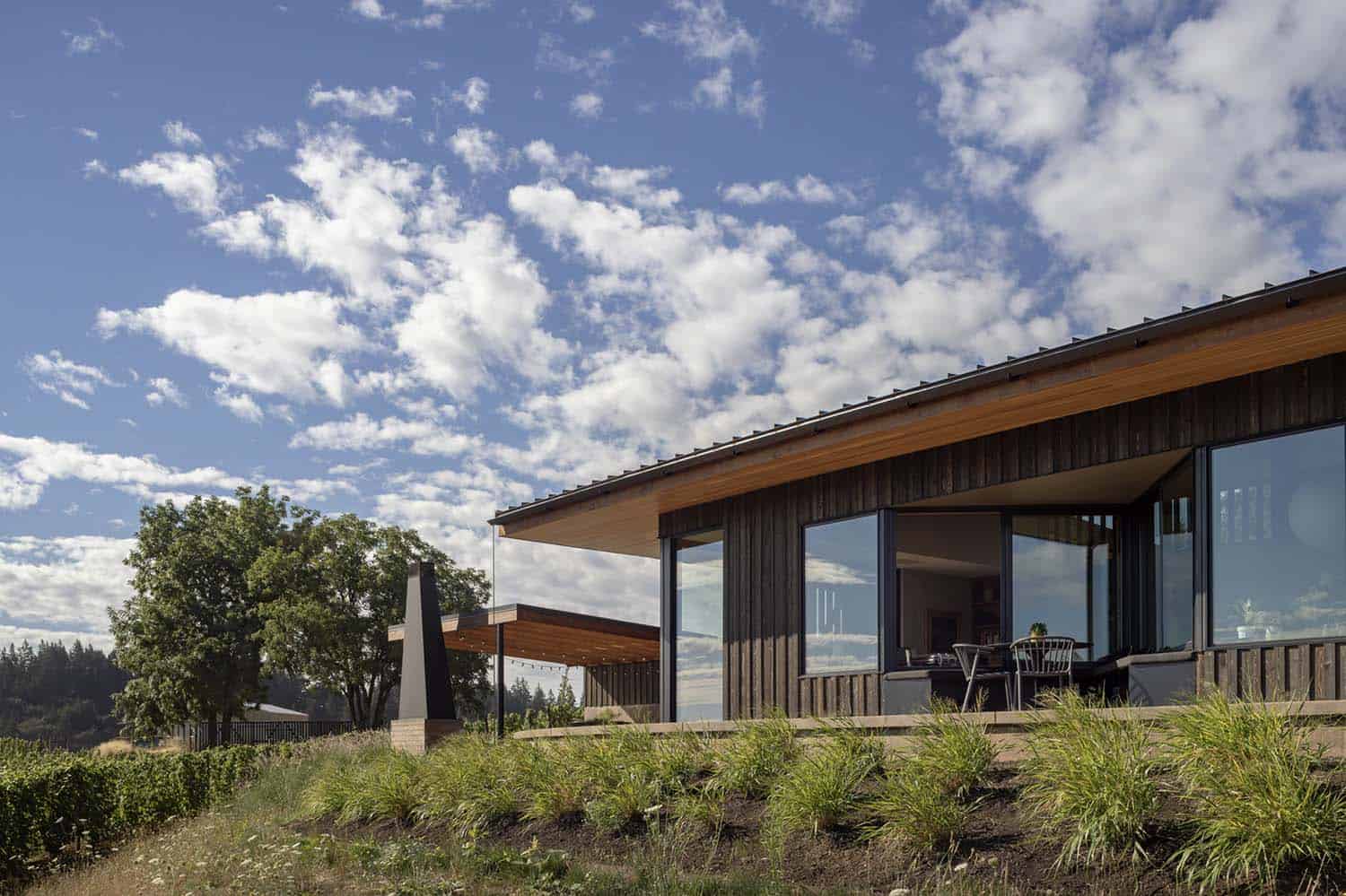
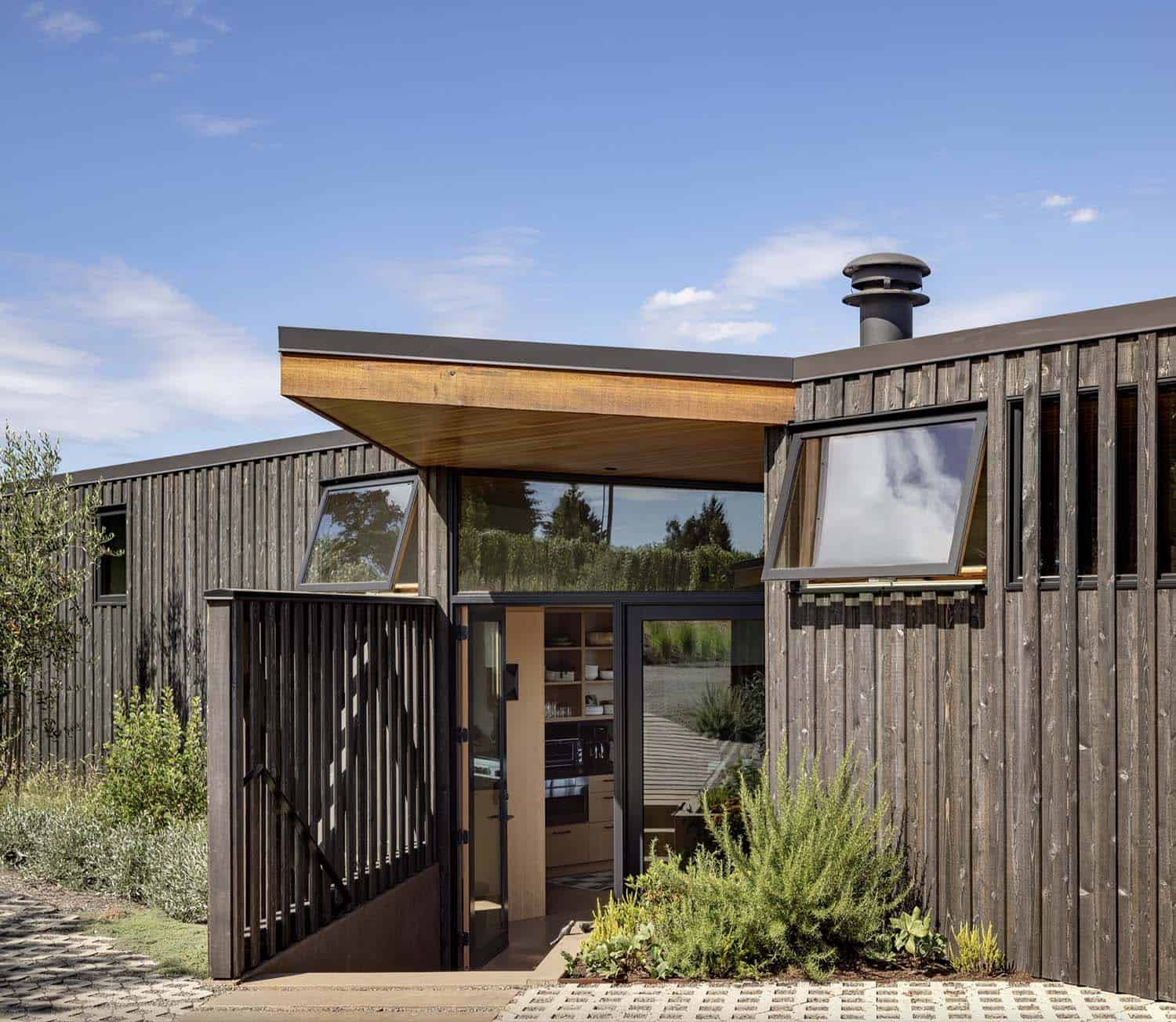

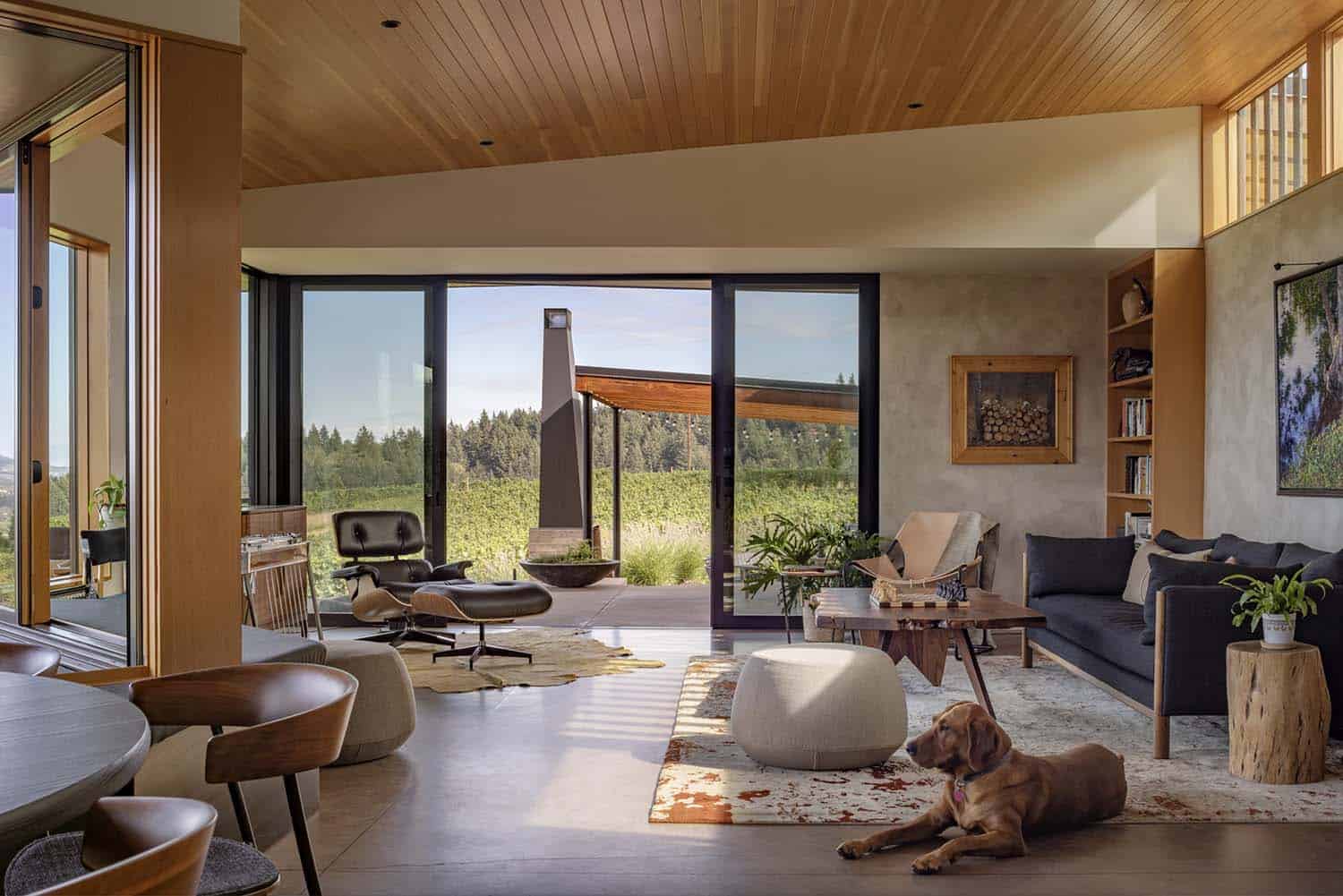
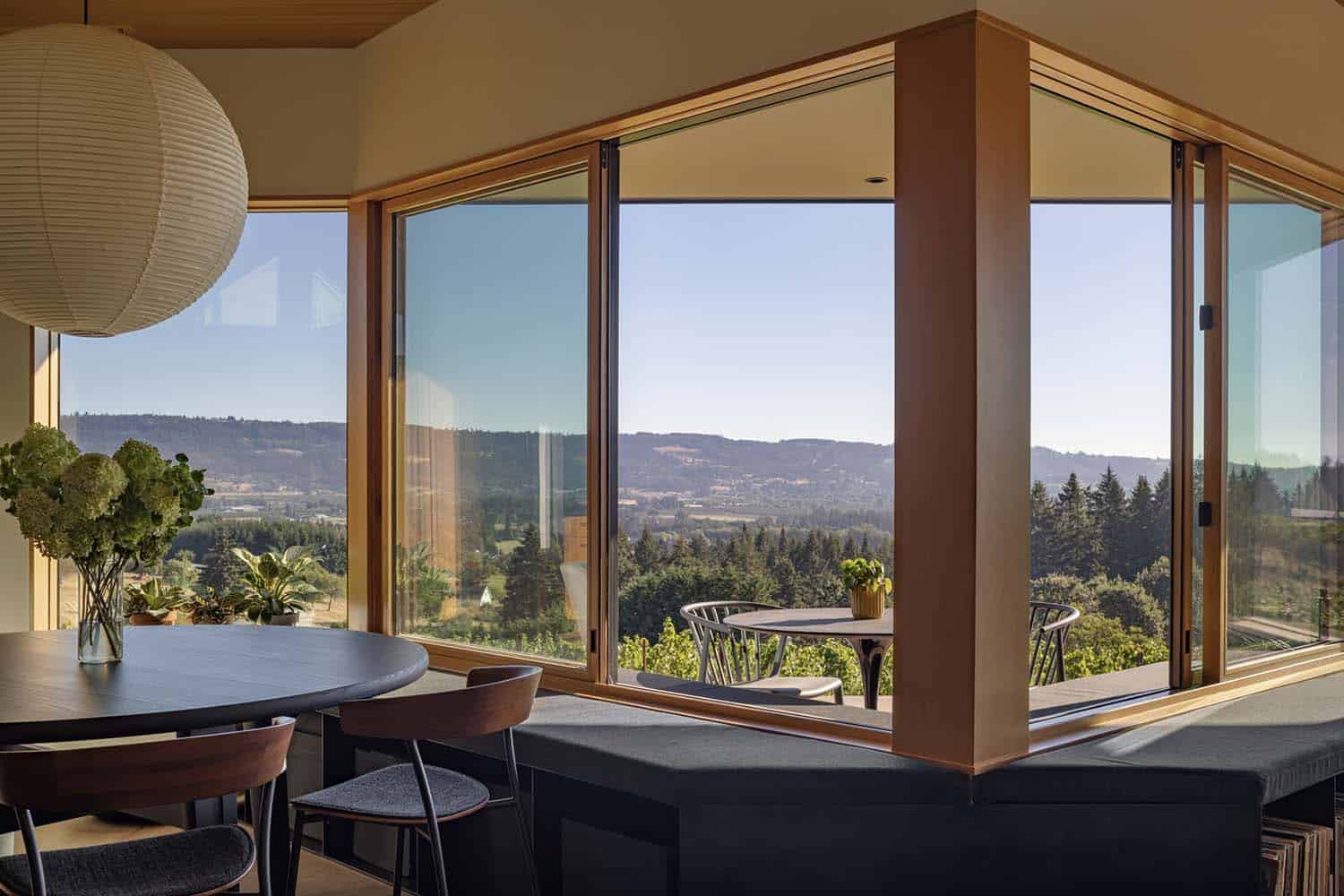
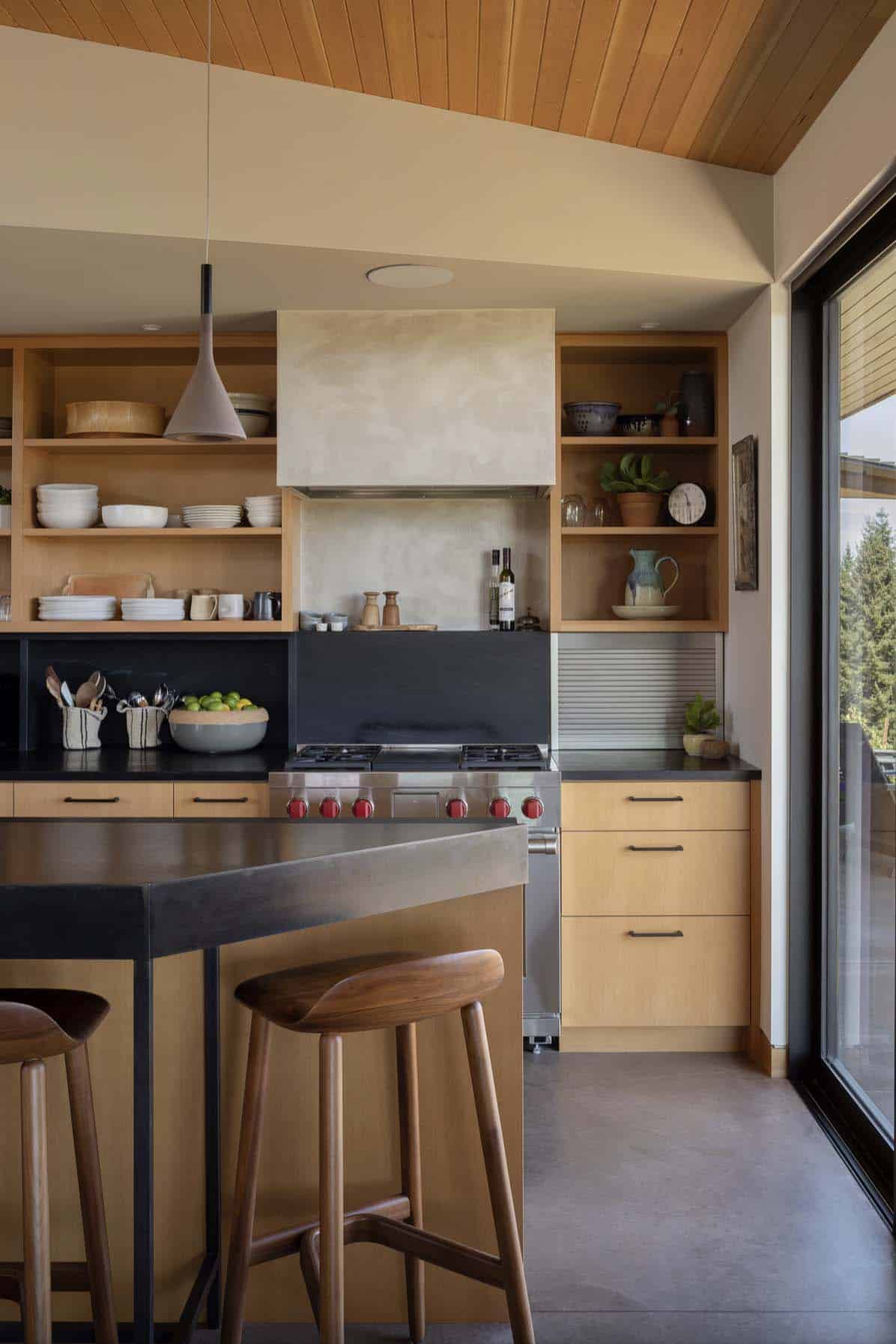
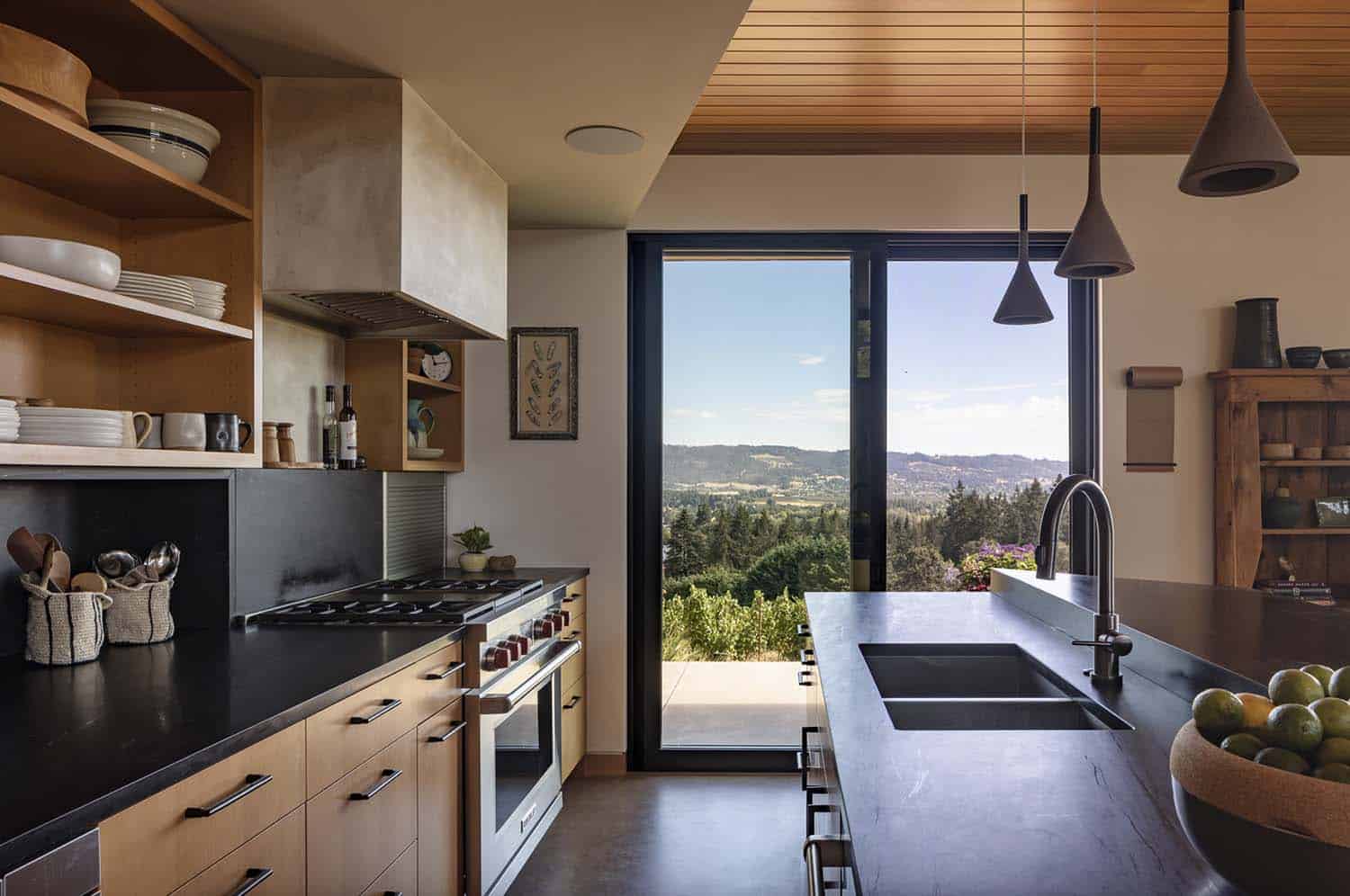
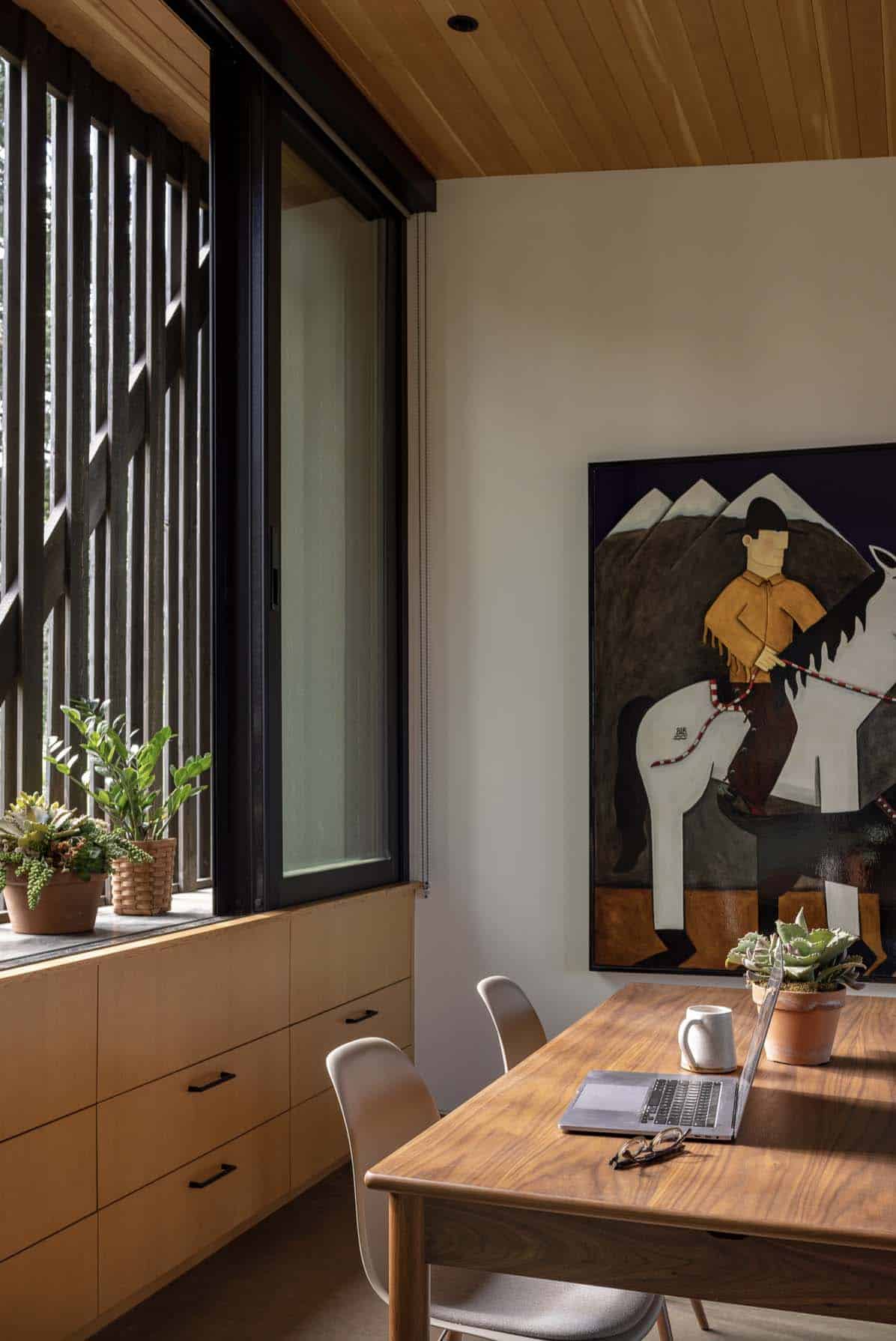
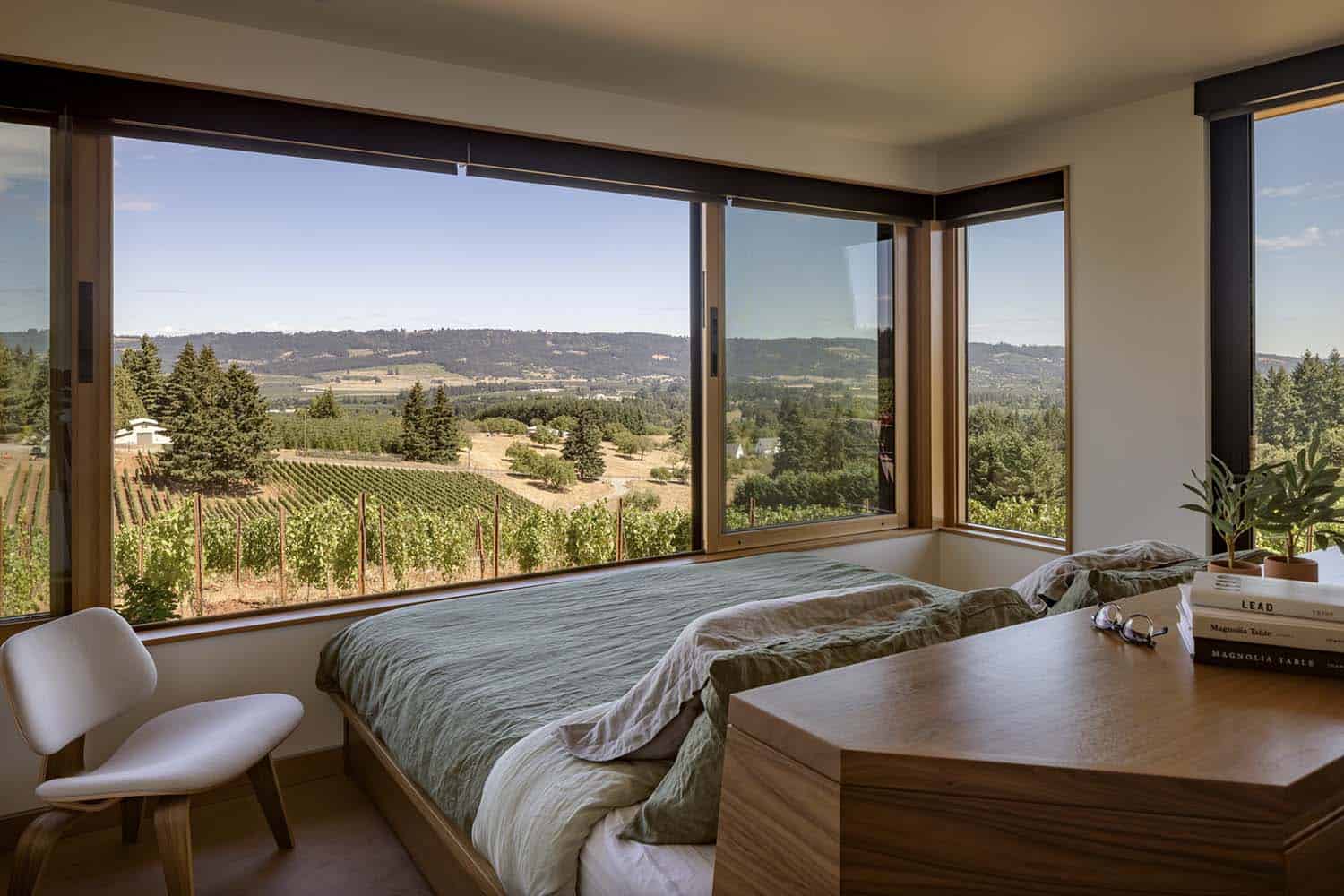
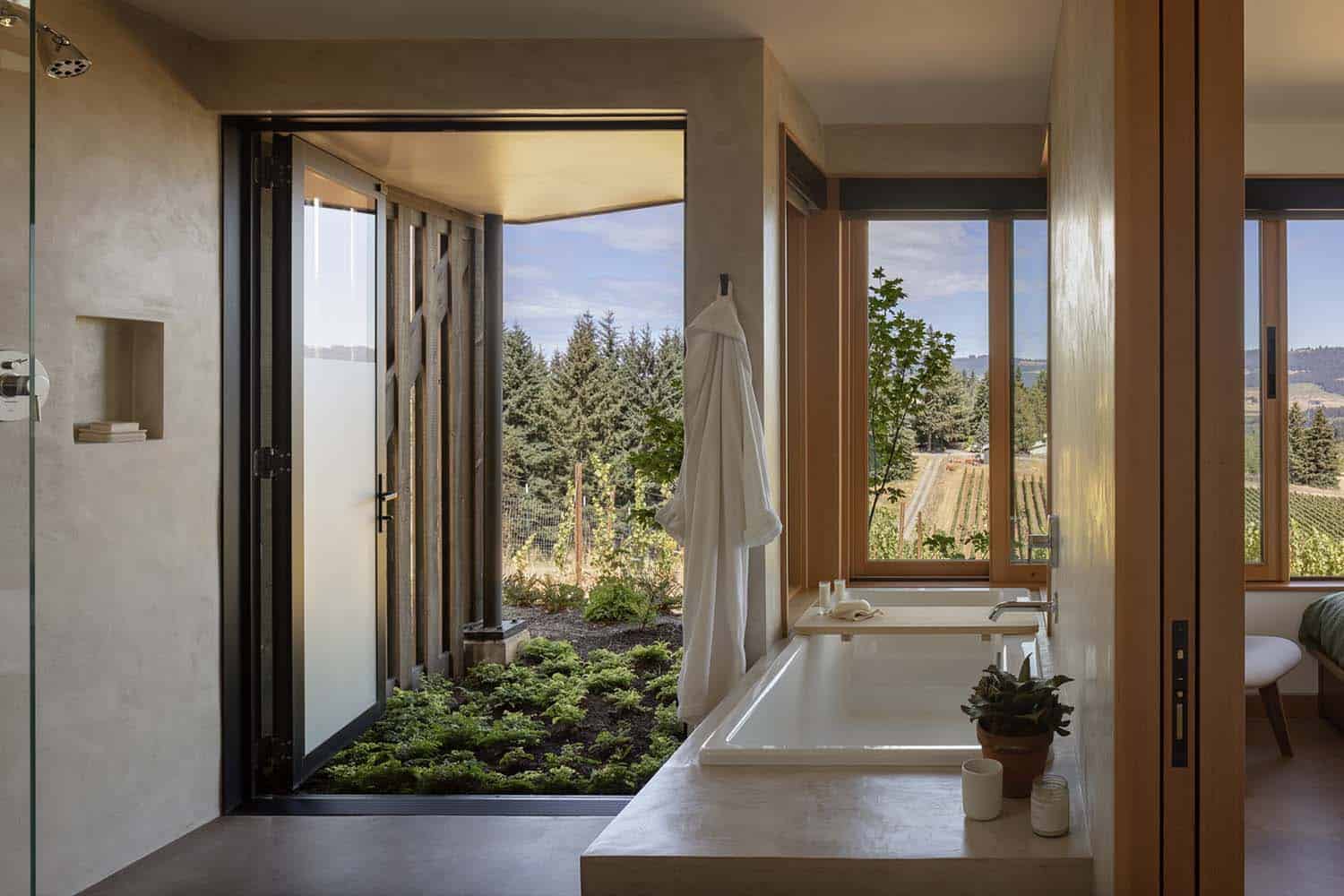

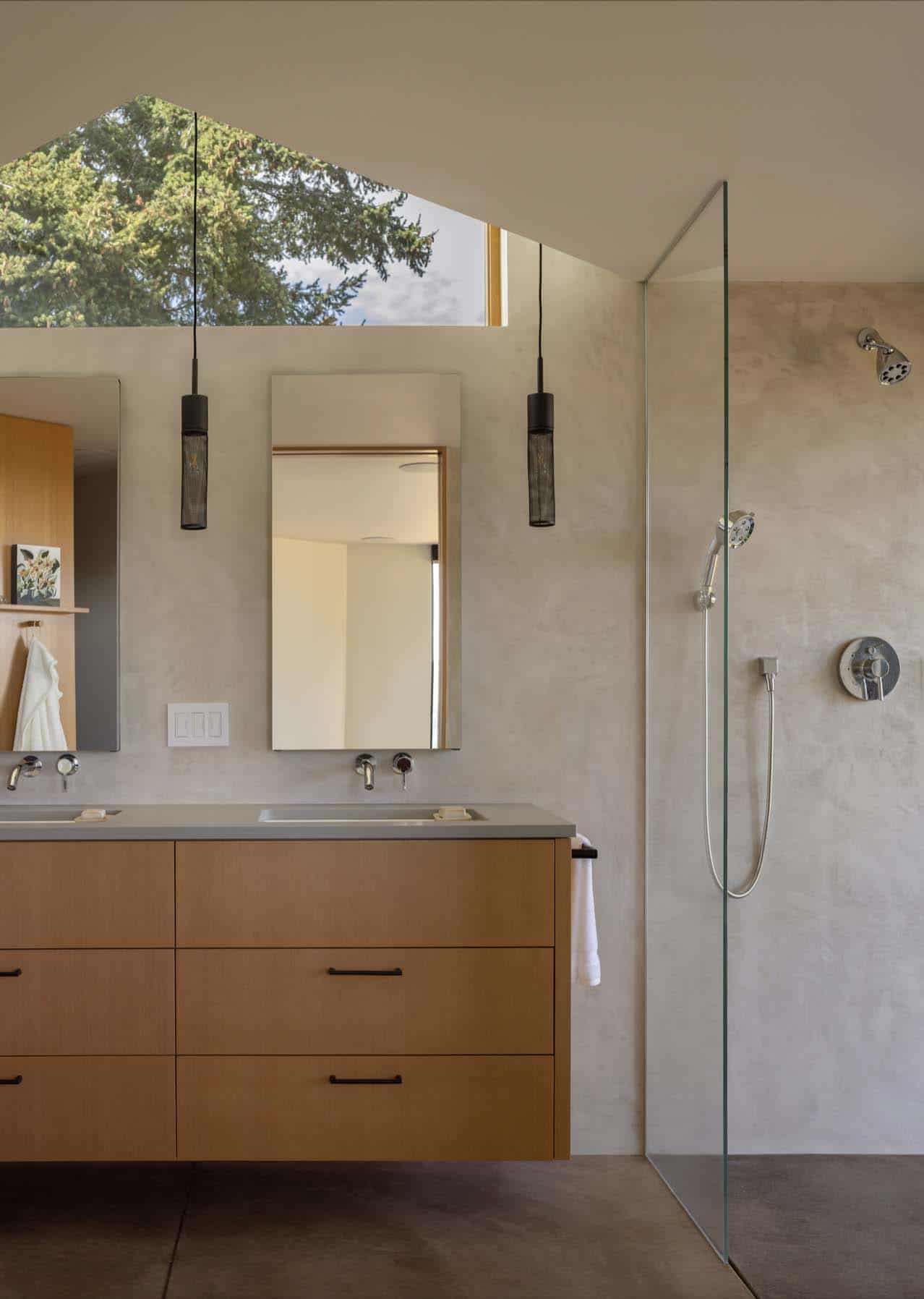
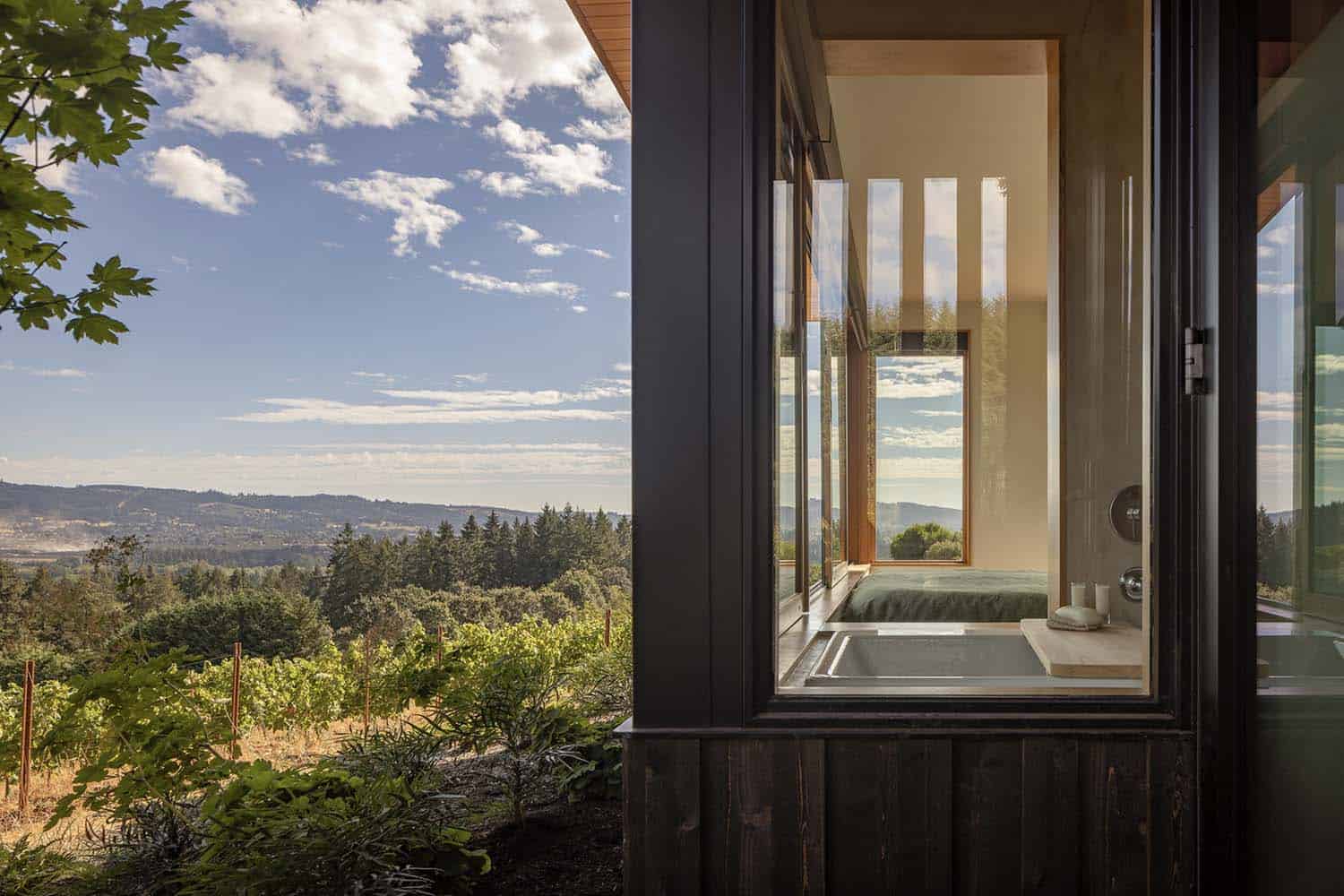
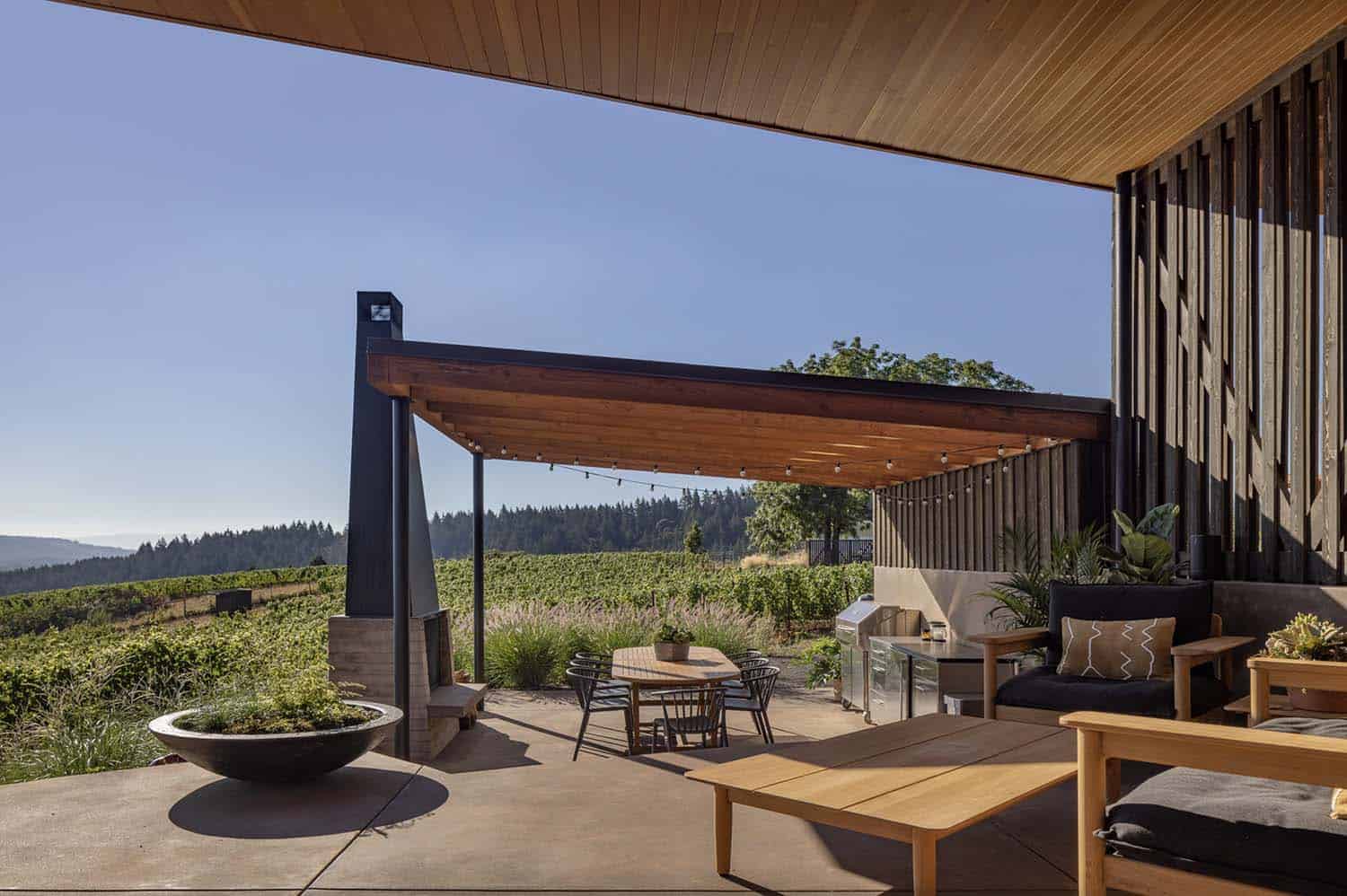
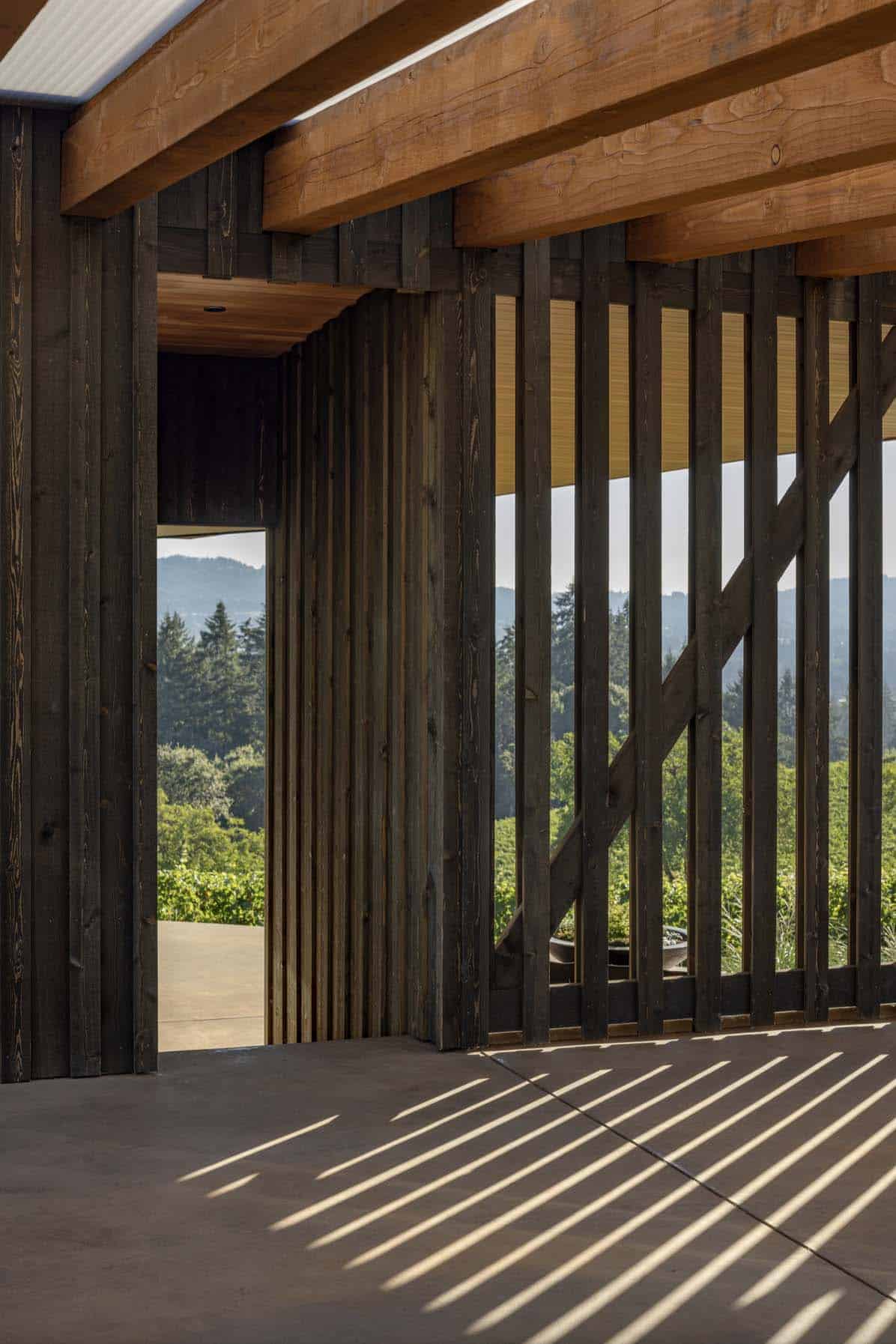

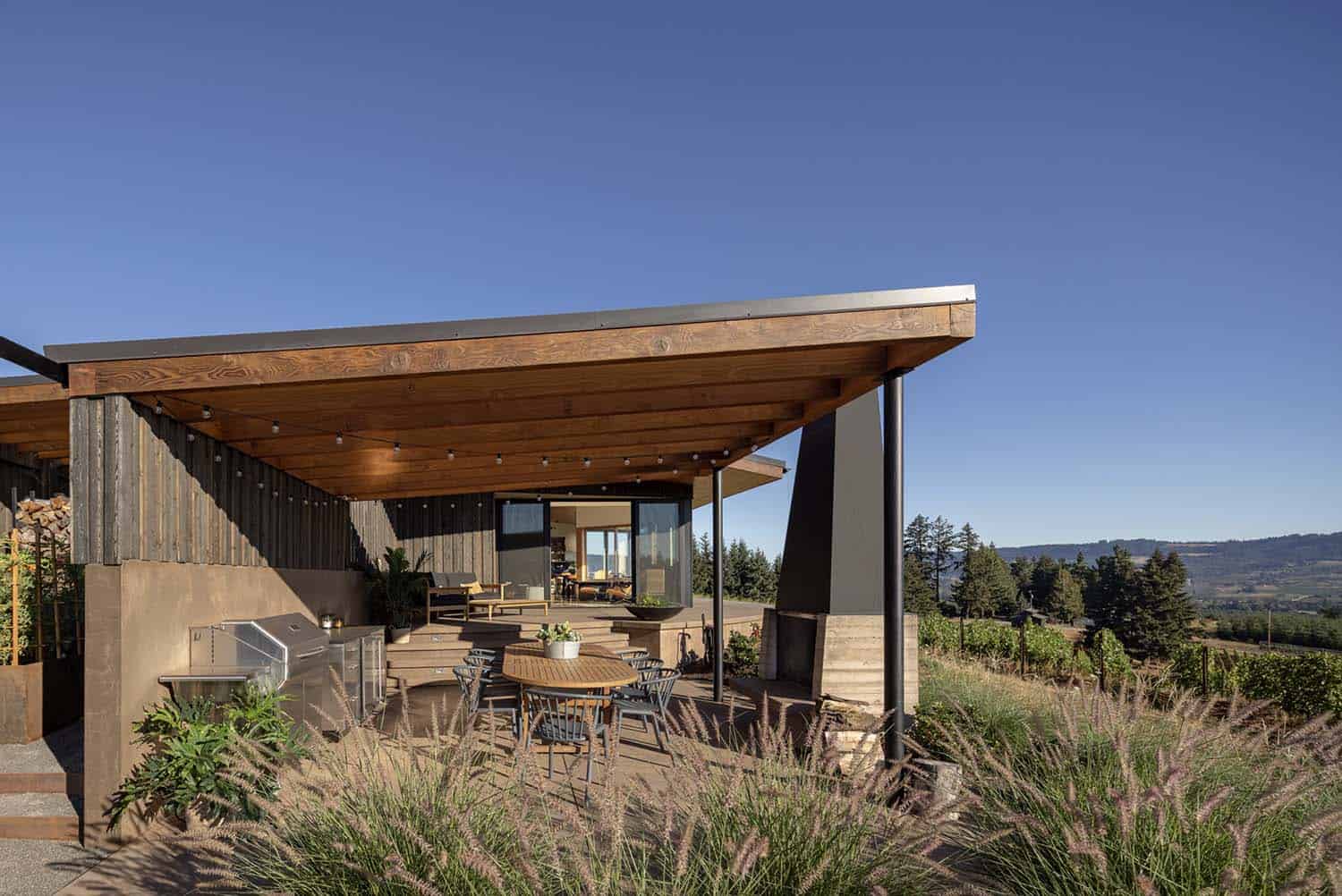
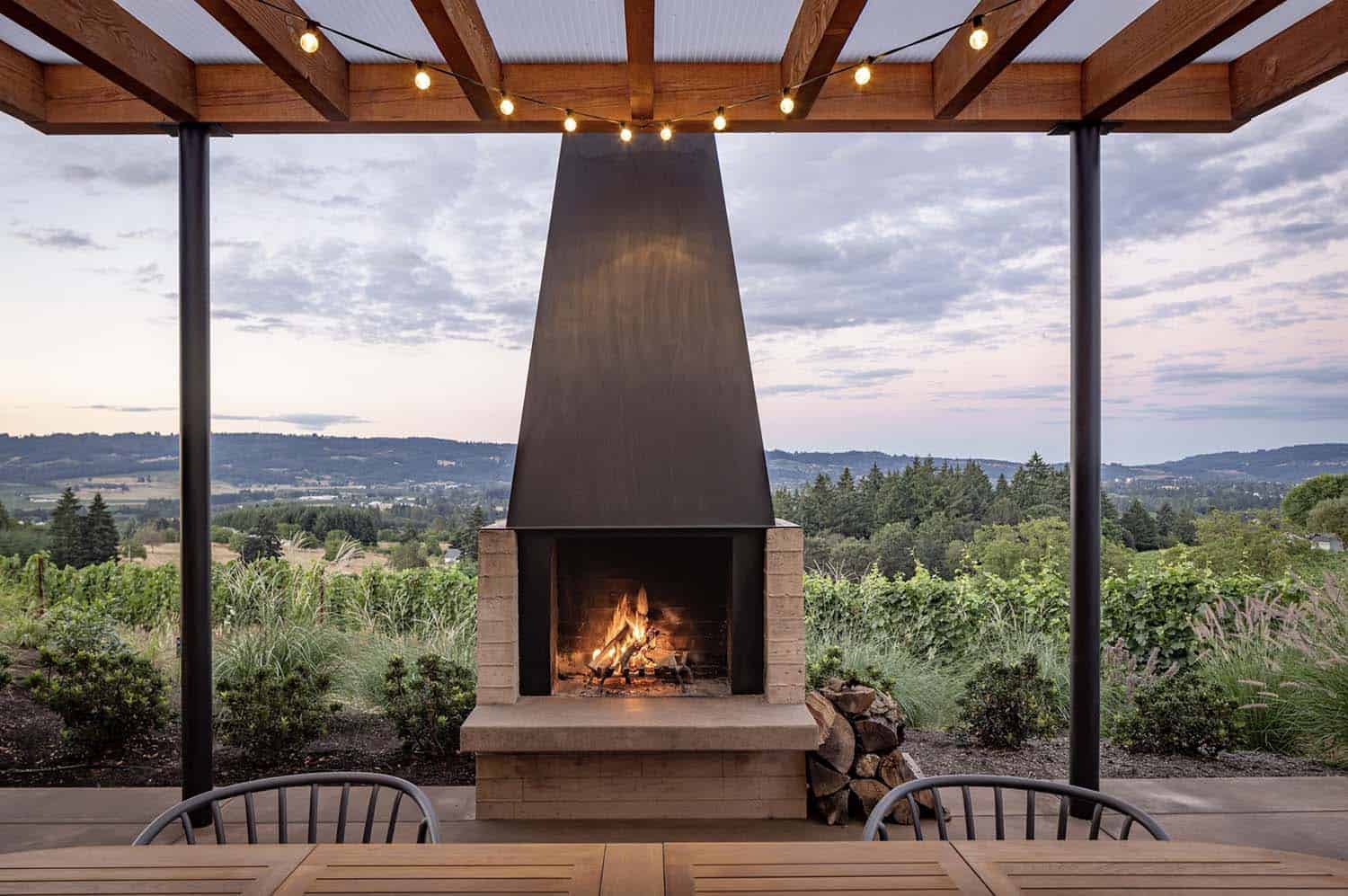
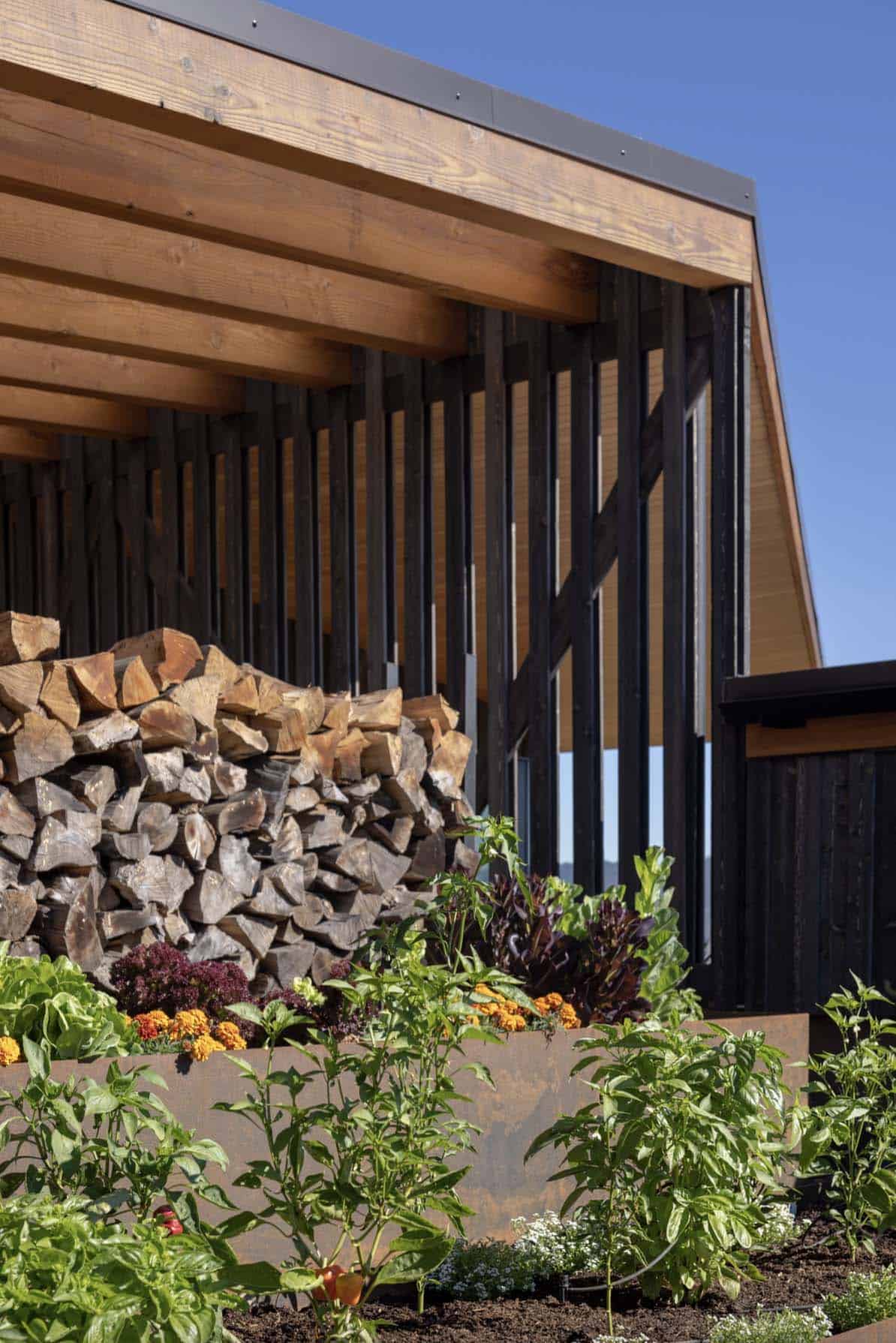
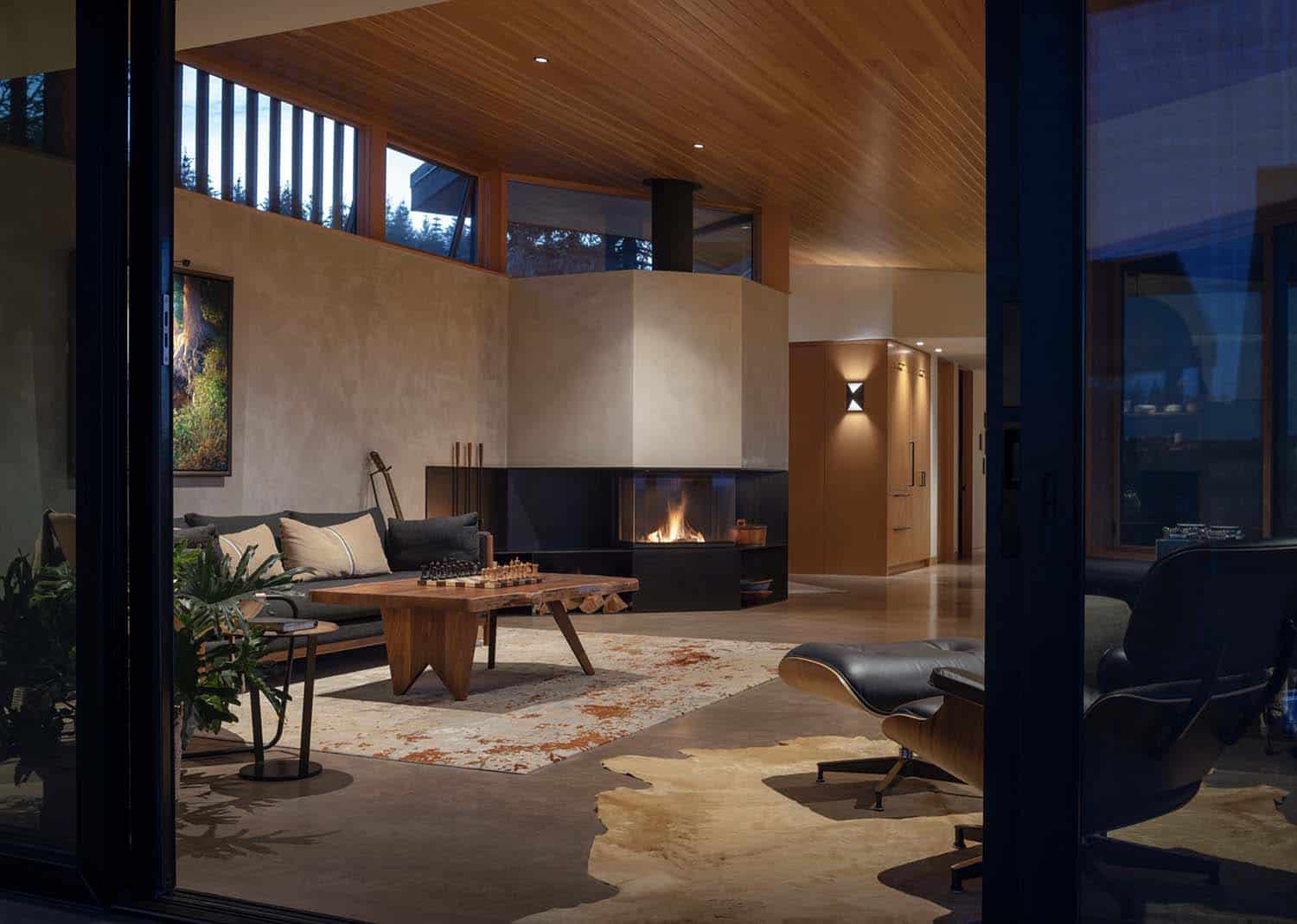
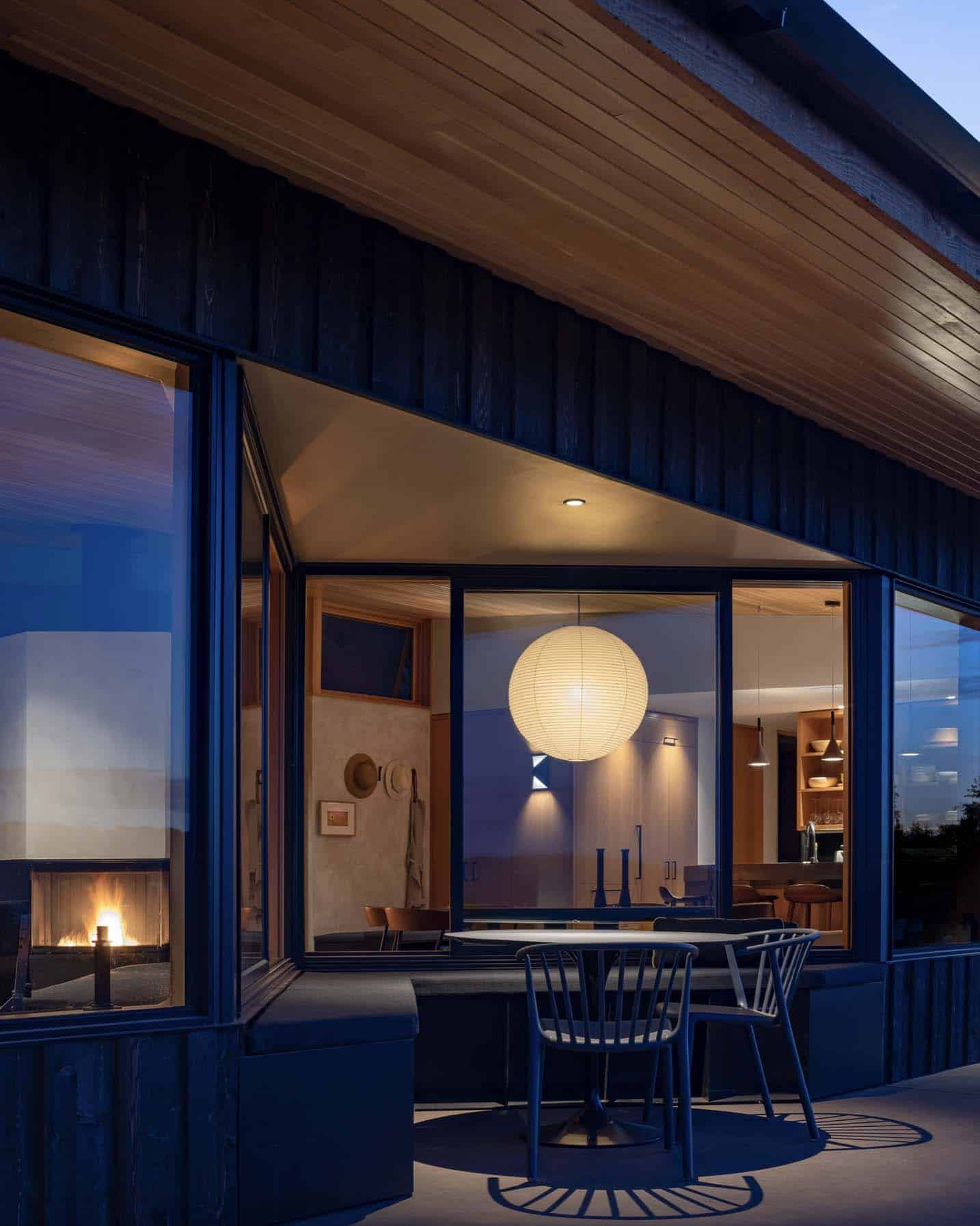
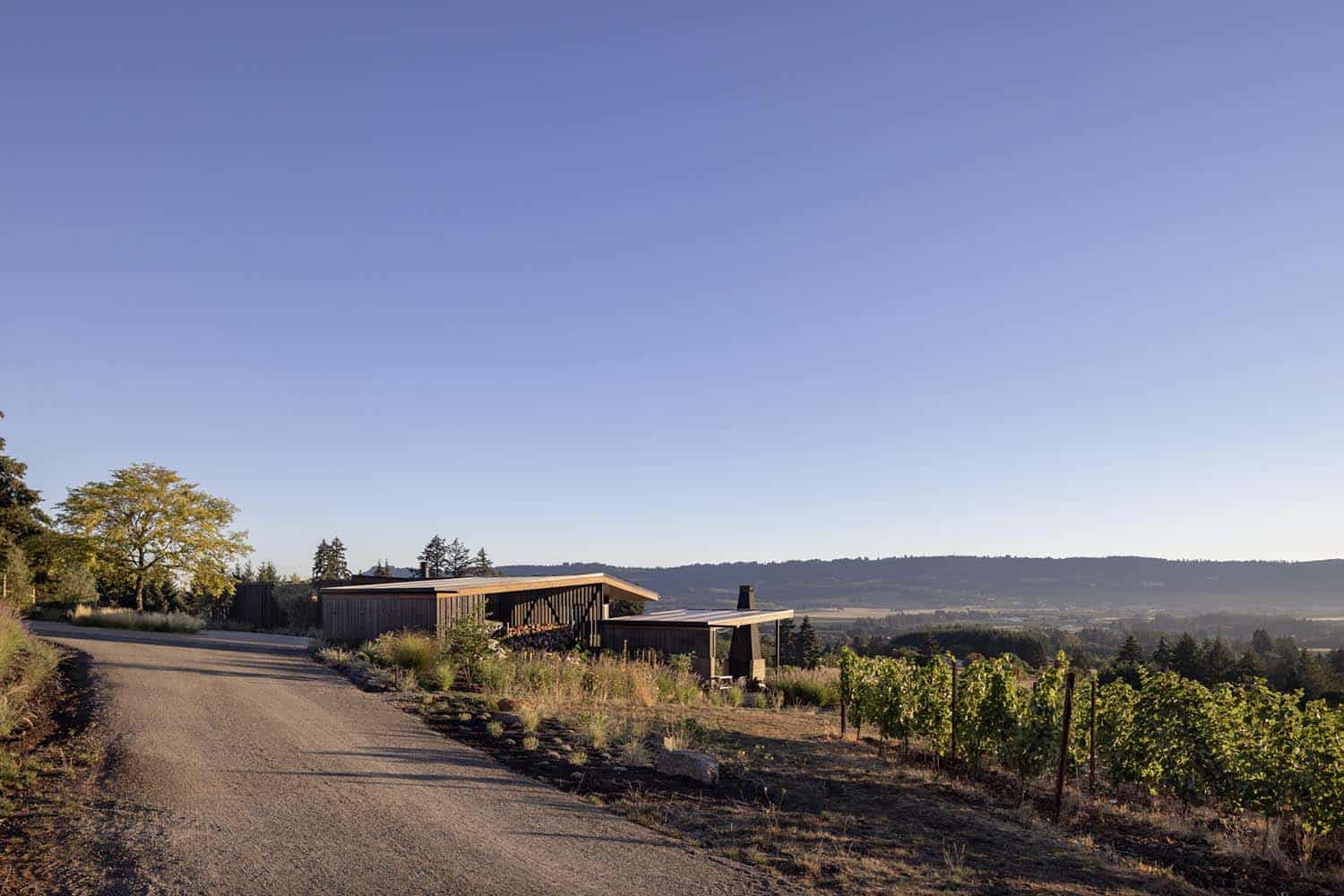
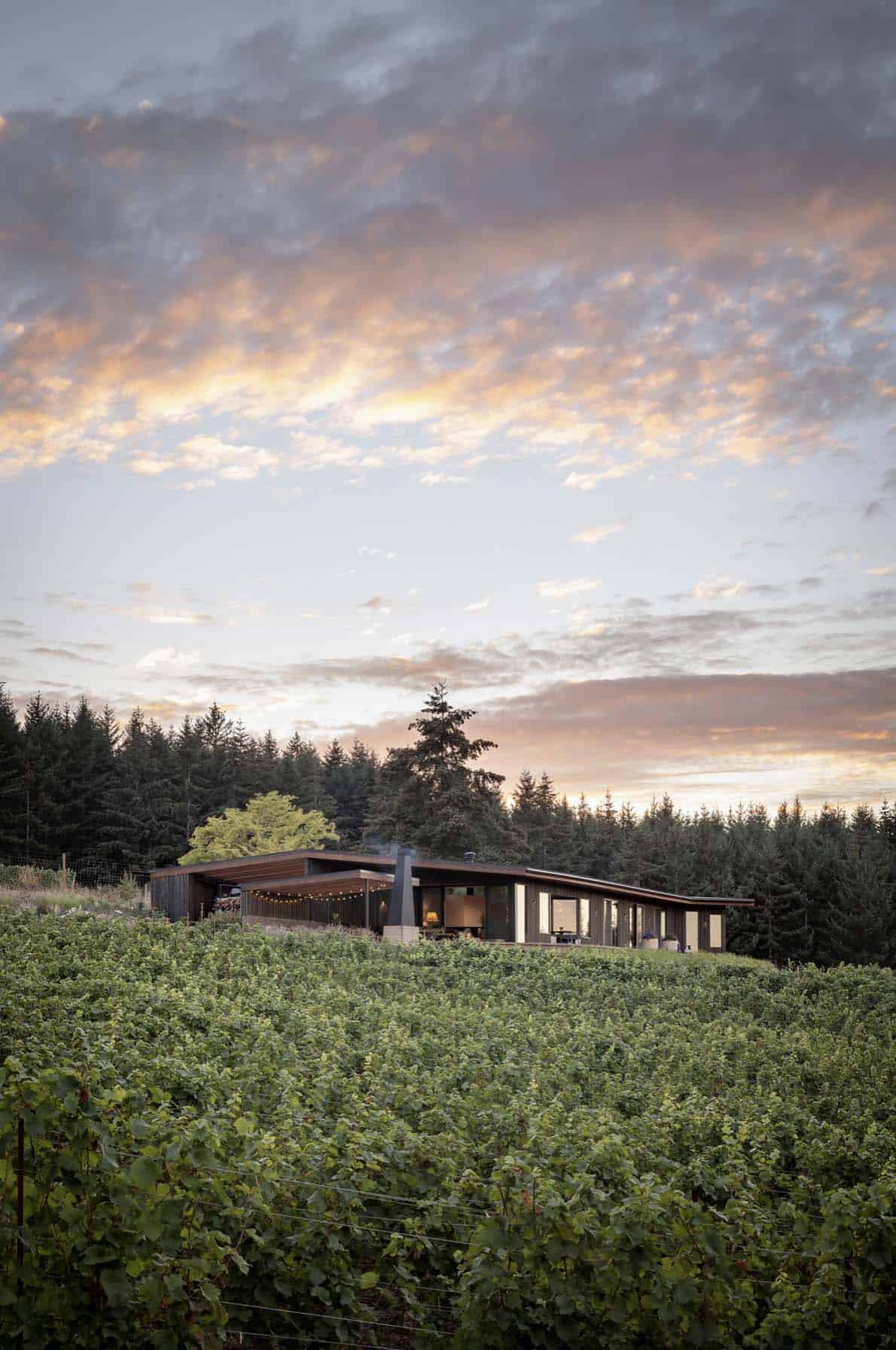
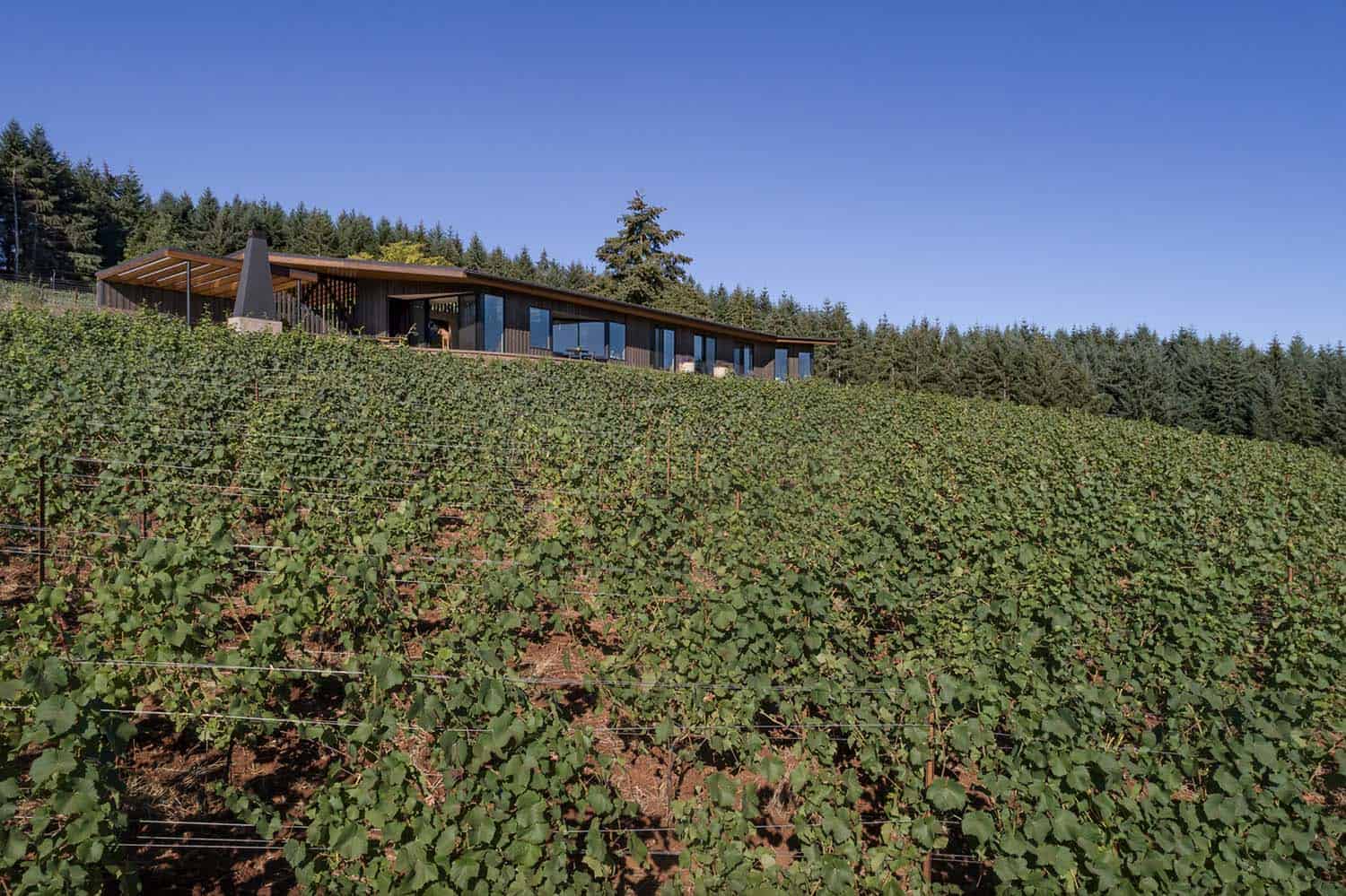
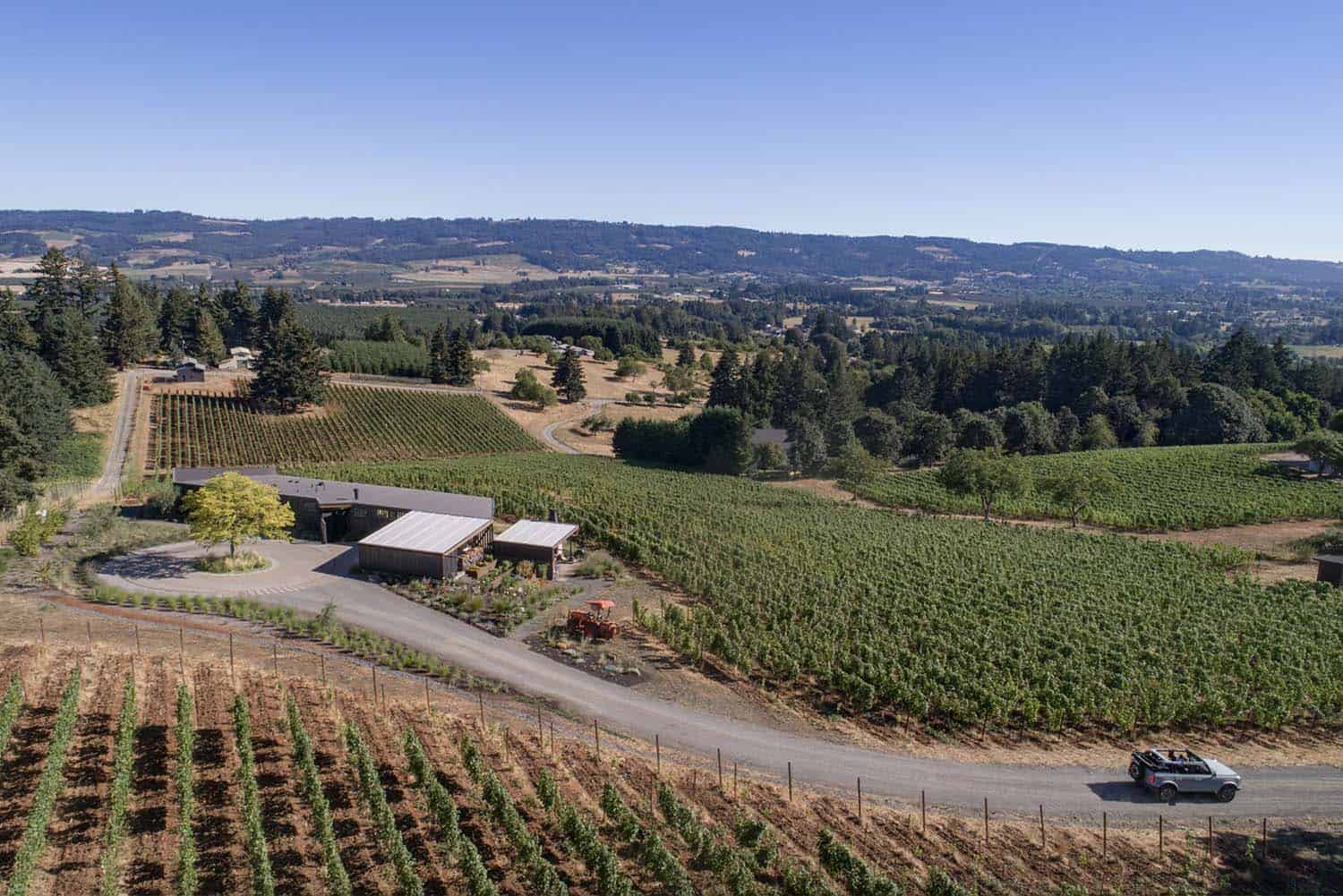



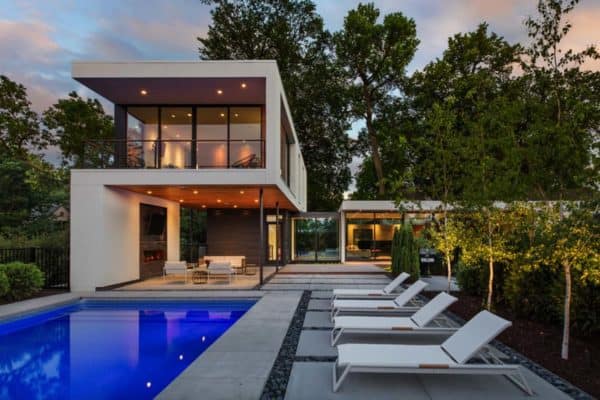
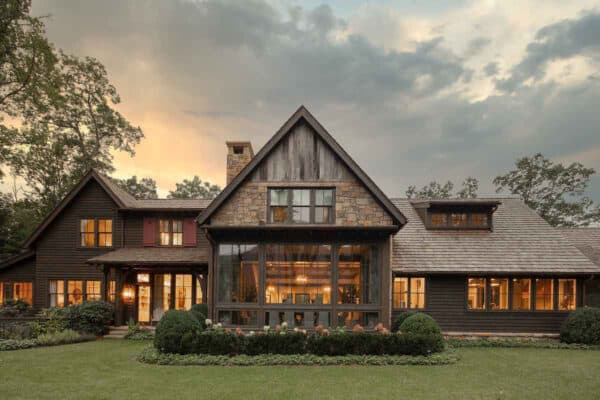


0 comments